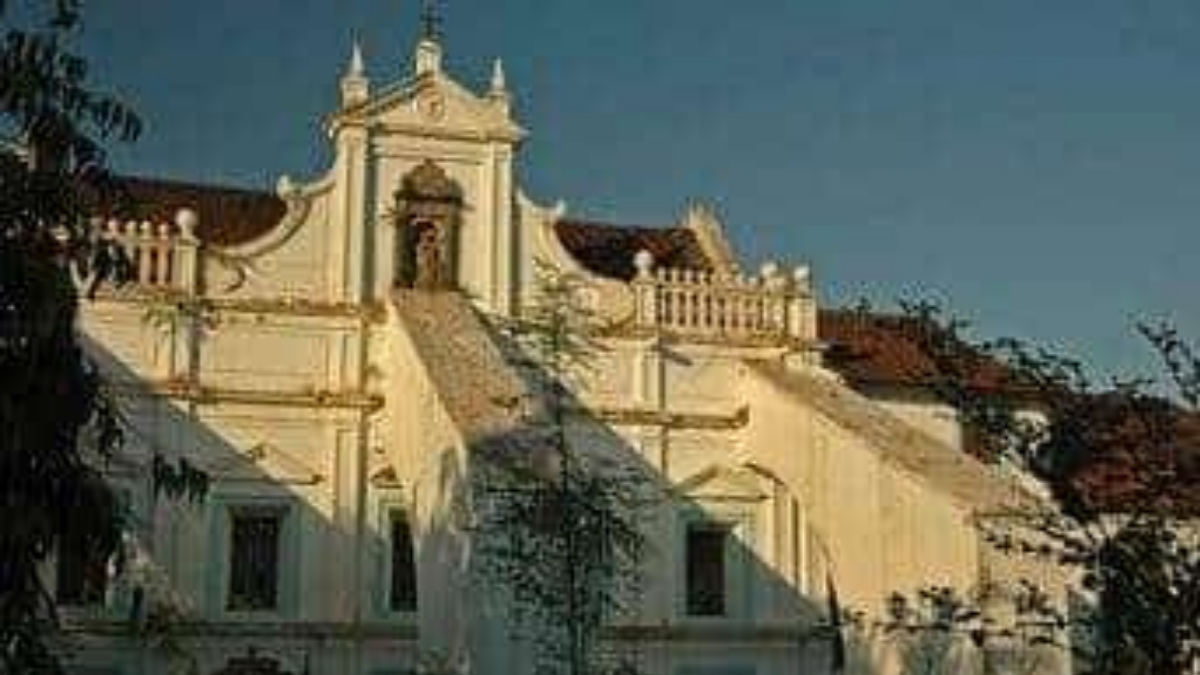Standing atop the Monte Santo, resolutely facing north is the Nunnery of Santa Monica. Like a grand old matriarch, the building stands not just with grace and dignity but with formidable beauty and an air of insurmountable defenses; tenderly sheltering those within whilst repelling the whims and fancies of the fickle, shallow world.
This nunnery in Goa is named after Santa Monica who was the mother of St. Augustine, and it could once accommodate more than 250 inmates. It was a sanctuary not only for nuns, but also for widows willing to devote themselves to the service of God, and for the temporary protection of well-born ladies whose husbands had travelled to far-off lands on military conquests or expeditions.

Claim to fame :
The convent enjoyed the patronage of Royalty and was the first nunnery in the east. The convent houses the Miraculous or Weeping Cross in one of the chapels.
Timings
The Nunnery, which is now the Museum of Christian Art is open from 9.30 am to 5 pm everyday.
History, Construction and Architecture
This convent, the Nunnery of Santa Monica was sanctioned in 1598 and the Archbishop Aleixo de Menezes laid the foundation stone in 1606. Construction was completed in 1627. Built like a fortress, this convent is significant for its massive walls and buttresses. The convent has a vast courtyard with a cloister. Its three stories have numerous cells and halls. Massive standing, rather than flying, buttresses characterize the exterior of the convent.
On Christmas Eve 1636, a massive fire partially destroyed the building but it was restored by Fr. Diogo de Santa Anna, who was the then administrator and “spiritual father” of the convent.
Interior and Artwork
The convent itself is massive and consists of three floors. There were various cells and rooms to accommodate the residents of the convent. The Church of the Weeping Cross is attached to the south of the convent. It has four altars; the main one is dedicated to St. Monica, the others to St. Augustine, the Bom Jesus and the Miraculous Cross. The vaults over some of the spaces were enriched with scenes from the Bible, similar to that of the Sistine Chapel in Rome.
On the 8th of February 1636, the statue of Christ on the Cross of Miracles is said to have opened its eyes whilst blood flowed from the wounds as if it were living. The same miracle took place once more, four days later in the presence of the Viceroy, Archbishop and other high-ranking church officials. The Archdiocese of Goa celebrates its festival on the 27th of November.

Life of the Nuns
The nuns in this convent were cloistered and lived a hard and frugal existence. They were allowed no contact with the outside world and even family visits were rarely permitted, and then only under strict supervision.
They were divided into two groups within the convent. The nuns of the black veil were only those ladies of Portuguese descent whilst the nuns of the white veil were of native Goan descent. Although the government recommended that this distinction be abolished they were largely ignored.
Legend and Lore
One story, which has in fact been attested to by many and recorded in the Secretariat of the Government of Goa, states that Sr. Maria de Jesus died on the convent premises, at the age of 78 with stigmata present on her hands and feet. This was apparently verified by the physicians of that time.
Today this convent has been converted into the Museum of Christian Art, whilst the old Monastery of Santa Monica houses the Mater Dei Institute, for the formation of the faith for women from all religious congregations in India.
On your way to the museum, it is well worth a stop by at the chapel of the Weeping cross to admire the massive and formidable building which has stood the test of time, relentlessly guarding its inmates against the vices and foibles of life in the outer world.


